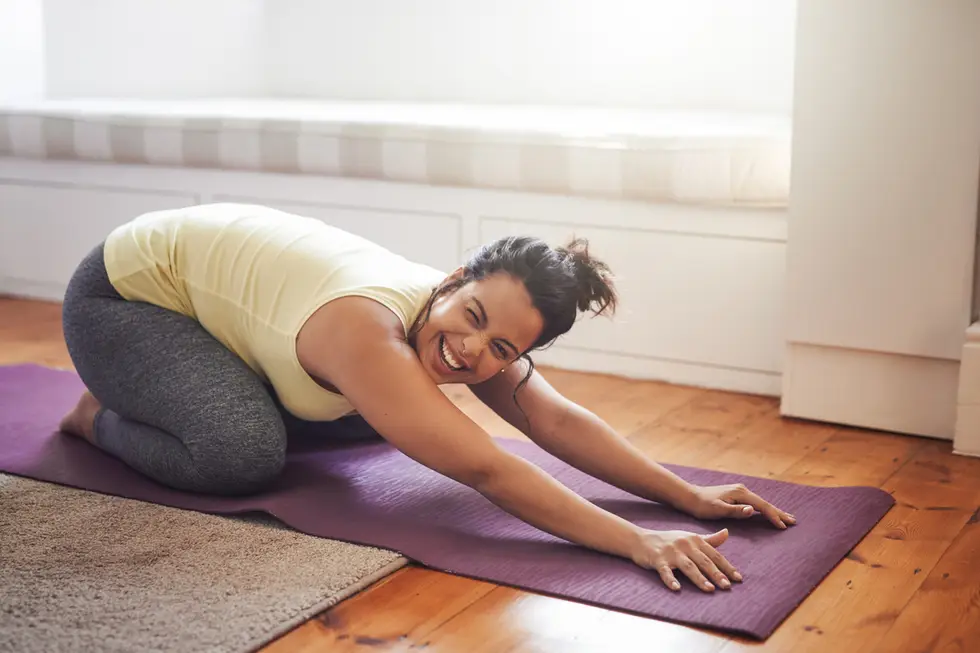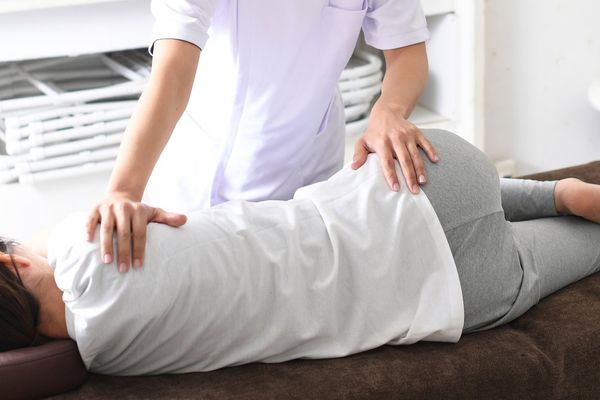The first time I tried doing kegel exercises, it was a disaster.
Despite YouTube tutorials and diagrams, I couldn't quite figure out if I was doing them right, let alone using the correct muscles. After a few days of trying, I gave up.
It turns out my experience with kegels isn't unusual.
“Most people either don't do them right, do too many, or do too few," said Susan Kellogg Spadt, Ph.D., the director of female sexual medicine at the Center for Pelvic Medicine and a member of HealthyWomen's Women's Health Advisory Council.
For most women, three sets of ten three times a week is an ideal amount.
Fortunately, there are alternatives for women to strengthen pelvic floor muscles without kegels.
Understanding the pelvic floor
Many women are confused about where the pelvic floor is and what it does. So before delving into exercises, it's important to understand how the pelvic floor muscles impact your health.
“[Patients] know cognitively they have a pelvic floor, but they don't have a conscious awareness," Kellogg Spadt said.
According to the Mayo Clinic, the pelvic floor is a collection of muscles that support a woman's pelvic muscles including her bladder, uterus and rectum.
“The pelvic floor muscles are very important muscles, not just for their local function but their systemic function," Kellogg Spadt said. “They're good for everything."
In addition to helping hold in a woman's internal organs, they also play a role in urine control and sexual satisfaction. Having trouble with urine leakage or having to pee frequently? That's your pelvic floor at play.
Even if you don't have those issues, you might want to consider your posture.
“When most people think about their posture muscles, they think about their core muscles," Kellogg Spadt explained. “What most people don't realize is if the core is misfiring, the pelvic floor muscles will kick in and help stabilize."
If you constantly slouch or sit cross-legged like I do (a habit I've been trying to break for the last decade), you could benefit from pelvic floor exercises.
But if the thought of attempting kegel exercises again sends a chill down your (not-so-perfectly-adjusted) spine, there are other exercises out there.
The clamshell, side step & child's pose
Kellogg Spadt recommends the clamshell and the side step as alternatives to kegel exercises.
“The thing these two exercises have in common is they're causing a hip abduction," Kellogg Spadt said. “The clamshell and the side step movement have been shown in studies to strengthen the pelvic floor quite effectively."
It's a good idea to grab a yoga mat or find a soft surface to use before trying the clamshell. Lie on your side with your legs bent at the knee, stacked on top of each other. Rest your head on your lower arm and bend the other arm so your hand is touching the floor, with your elbow up. Pull in your belly button to tighten your abdominal muscles. Then raise the knee that's on top — and only your knee — while keeping your feet together, then bring the knee back down. Do not move your lower leg.
“You do about 20 reps on each side," Kellogg Spadt said. “You can do clamshells with and without resistance."
It's best to start without resistance, however, as your body adjusts to the new exercise.
A variation on this is a side step.
Stand with your feet shoulder width apart and go into a squat. Step to the side with your right foot before bringing it back to the starting position, then repeat using your left foot.
I spent a week doing both exercises each day. After a long stretch sitting behind my desk (slouching, naturally), I'd stand up and do 20 side step repetitions. Before going to bed at night, I'd practice the clamshell. Both became more comfortable as the week went on. The extra five minutes or so I spent per day on the exercises made my lower back feel better after long stints at my desk.
“I think most people could do this irrespective of their age or weight," Kellogg Spadt said. “Most people have the general flexibility to do a clamshell or side step."
There is no single age when you should start pelvic floor exercises.
“[It's] important to stretch and strengthen lifelong, but definitely in the years surrounding childbirth," Kellogg Spadt said. “You're probably going to have less lower back pain, less hip pain with a stronger pelvic floor."
Studies have shown that yoga can also be an effective way to strengthen pelvic floor muscles without kegels.
Kellogg Spadt recommends incorporating the Happy Baby, Child's Pose, Knees to Chest, Reclined Bound Angle and Seated One-Legged Bend, among others, to your routine.
Pay attention to your body
A weak pelvic floor can show itself in two different ways: by being too tight or being too loose.
“When most people think weak, they think lax," Kellogg Spadt explained. “The pelvic floor muscles should have a normal tone; not too loose and not too tight. Weak pelvic floor muscles can malfunction by becoming either too loose (laxity, underactivity) or too tight (spasm, overactivity)."
A hypertonic pelvic floor happens when the muscles are too tense and become difficult to relax, leading to pain, spasms, constipation, painful sex and a stronger urgency to pee. When the pelvic floor muscles are lax — too loose — urine leakage, an increase in urination frequency, pain and the feeling of urinary retention are common side effects.
Urinary incontinence, fecal incontinence, and sexual dysfunction can all signal that your pelvic floor muscles need some attention. If exercising doesn't bring improvement, it might be a good idea to speak with your doctor or book a few sessions with a physical therapist.
“If it is a source of pain, embarrassment, urinary symptoms, bowel symptoms or sexual dysfunction, I encourage patients to be their own best advocate on this one," Kellogg Spadt said.
Even if you're not experiencing acute symptoms, keeping your pelvic floor strong is important. If the idea of kegels is overwhelming, try some clamshells and side steps.
- Fast Facts: What You Need to Know About Vaginal Prolapse ›
- Postpartum Exercises: When and How to Start ›
- How to Know if You Have Urinary Incontinence ›
- Try These Alternatives to Kegel Exercises ›
- Reminder to Regularly Exercise Your Pelvic Floor Muscles - HealthyWomen ›
- Strengthening Core - HealthyWomen ›
- What Is Vaginal Rejuvenation? - HealthyWomen ›
- Facts About the Pelvic Floor - HealthyWomen ›
- Pelvic Floor Therapy - HealthyWomen ›
- Pelvic Floor Expert Sara Reardon - HealthyWomen ›







